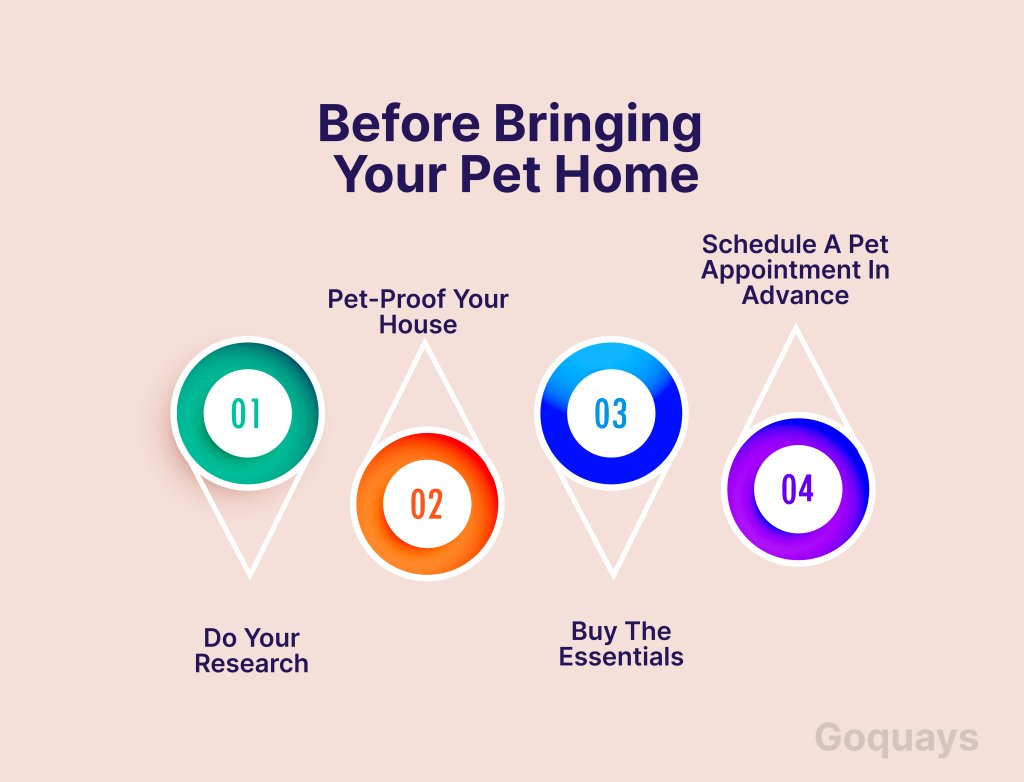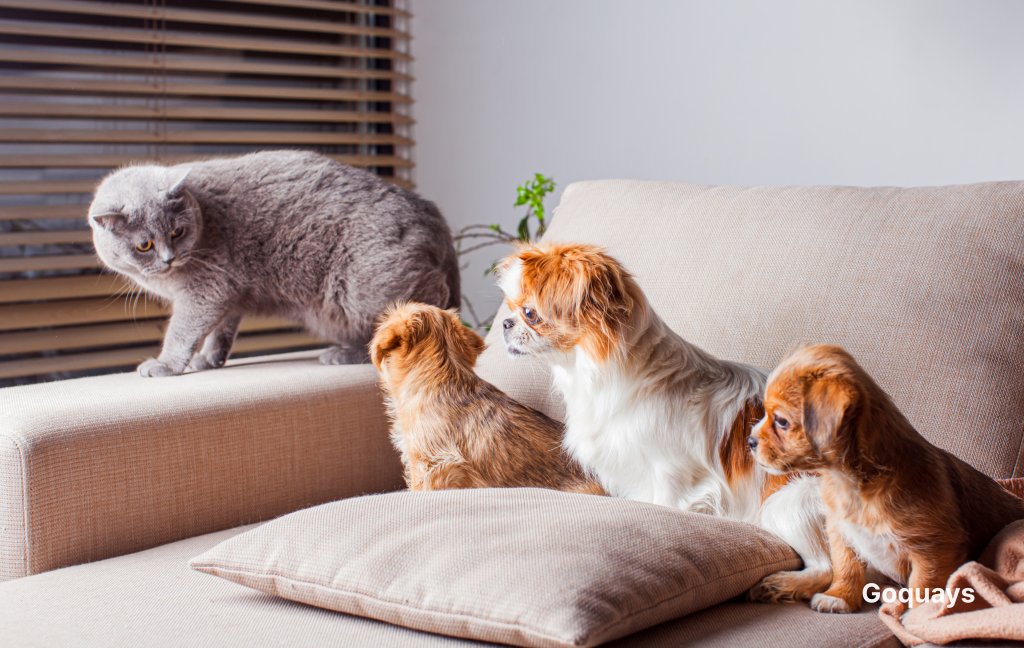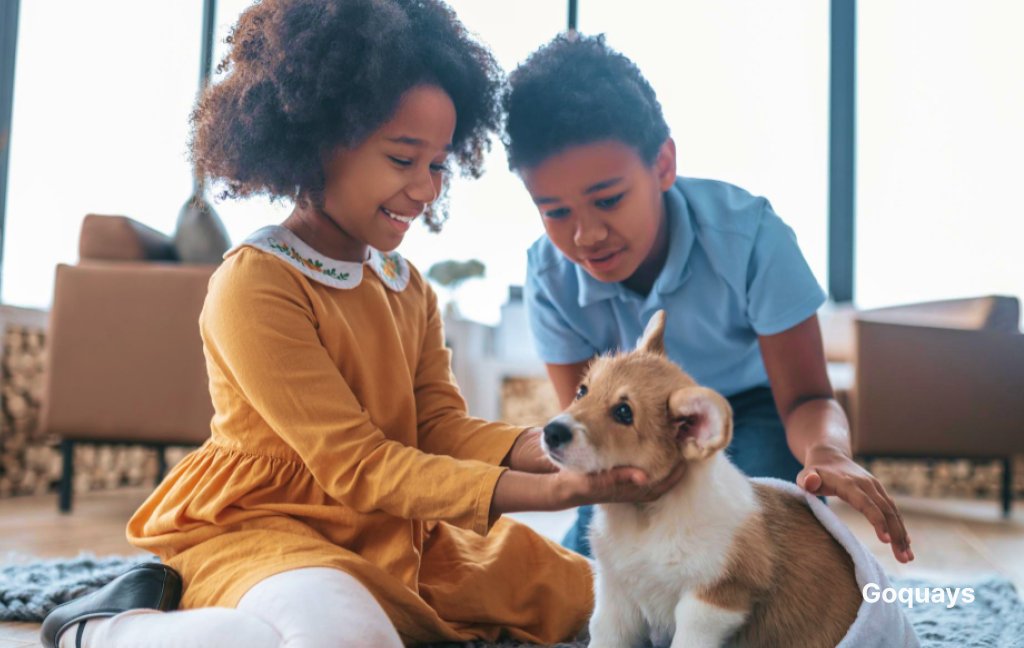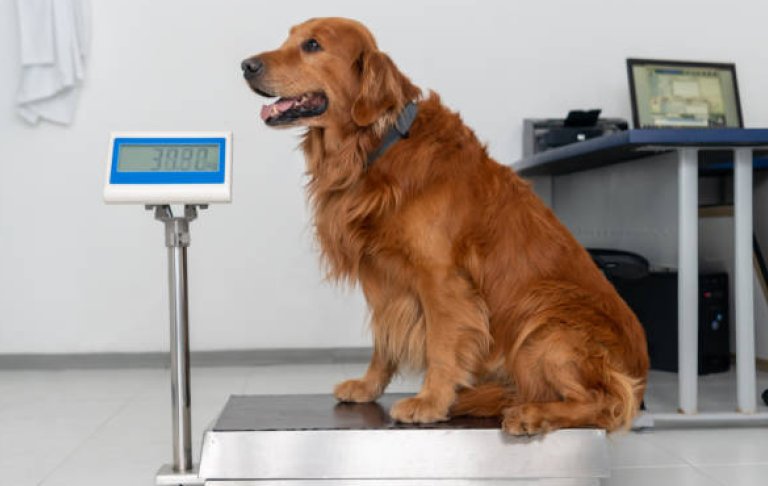When you first adopt a pet, the first two days or weeks are important for setting the tone for the rest of your time together. A pet in a new home means getting used to unfamiliar scent, environment, people, and new routines, which means your pet needs time, space and a sense of safety to adjust to their new home. Likewise, you, as the pet parent and your family need time to adjust to a new addition in your home(everything can feel like a big change).
That is why understanding “how to introduce a new pet to your home: a step-by-step guide” is one of the most important first steps in responsible pet parenting. In this guide, we will walk you through everything you need to know to ensure your new pet settles in happily.
Before bringing your pet home

Here’s how to get your home ready before bringing in a new pet
- Do your research
Every pet is different, so are their needs. Before bringing home a new pet, look into their ideal diet, required exercise routine, common health concerns and how much space your pet might need. Also, if you are adopting, ask the shelter or the breeder about the pet’s history, temperament or behaviours.
- Pet-proof your house
Pet-proofing is all about ensuring your pet’s security in your home. Some of these precautions include;
- Secure electrical cords, dangling blinds, small objects that could be swallowed or toxic house plants.
- Block off areas where your pet could get injured or stuck.
- Set up a designated place for your pet. This could be a crate, or cosy corners where your pet can relax.
- Buy the essentials
If by the time your pet is home, you have the right supplies available, it makes the first few hours or days easier.
Some must-haves include;
- Food and water bowls
- Pet foods
- Bedding, crate or carrier
- Toys and treats for stimulation
- Grooming supplies
- Litter box (for cats) or pee pads (for puppies)
However, you don’t need to get everything at once
- Schedule a pet appointment in Advance
Even if your pet appears healthy, it’s a good idea to have them checked by a vet within the first few days. Early examination can notice hidden health issues, verify vaccinations, and help you set up a long-term wellness plan.
The first day: bringing your pet home

Here are some tips to follow
- Keep your environment calm
Your pet is coming to an unfamiliar environment. Minimise noise, limit the number of people around, and keep other pets and children at bay for the first few hours. Let your pet get used to it environment at its own pace.
- Stick to the essentials
Don’t try to do too much in one day. Skip house tour, skip introductions, and skip force plays.
Instead, focus on establishing trust through gentle interaction
- Use a calm and reassuring tone
- Let them come to you when they are ready
- Establish a gentle routine
Pets thrive on routine. Consistent routine helps them feel secure; feed them at the same time every day, take them on regular walks, and show your new cat where the litter box is.
Introducing your new pet to existing pets
Bringing home a new pet into a home with resident pets can cause tension among your pets–one is familiar with its environment, while the other is new. The best thing to do is to create a gradual observed introduction between both pets. Whether you are introducing a cat to a cat, a dog to a dog, or across species. Here’s how to introduce them.
- Start with scents
Before a face-to-face meeting, let them get used to each other’s scent.
- Swap blankets, toys, and beds between the new and the home pet.
- Rub a soft cloth on one animal and place it near the other’s feeding area—associating the new scent with something positive like food.
- Observe reactions like sniffing, interest, or indifference are fine; hissing, barking, or backing away might mean slower progression is needed.
- Cat to cat introductions
Cats are territorial by nature, so take it slow. The process could take days or even weeks.
- Separate spaces: Keep the new cat in a designated room at first.
- Visual intro: After scent swapping, let them see each other through a slightly open door, baby gate, or carrier.
- Short, supervised visits: When they seem curious but calm, allow brief face-to-face time under supervision. Watch body language arched backs, growling, or tail flicking, may mean you need to pause and go back a step.
- Avoid forced interaction: Let them take the lead. Play sessions and treats during shared time help build positive associations.
- Dog-to-dog introductions
Dogs are social animals, but hierarchy matters. To avoid territorial tension:
- Neutral territory first: Start the introduction on a walk in a quiet, neutral area like a park, not inside your home.
- Parallel walking: Keep them on leashes, walking side-by-side with space between. This helps them adjust without confrontation.
- Controlled greeting: If both dogs show calm body language (wagging tails, soft eyes), allow them to sniff under supervision.
- Home entry: Let the resident dog enter the home first, then walk the new dog in. Supervise early interactions indoors and remove high-value items like toys or food bowls to avoid resource guarding.
- Cross-species introductions
If you are introducing a dog to a cat, things require a little extra care.
- Keep the dog leashed and calm.
- Let the cat remain in a safe spot on furniture, a shelf, or even behind a gate, so it can observe from a distance.
- Never allow chasing or barking, even if playful.
- Monitor closely for signs of stress in both pets and keep sessions short and positive.
Over time, mutual respect (not necessarily friendship) will likely develop. Many cats and dogs end up coexisting peacefully or even cuddling up.
- Watch for stress and give everyone space
Look for signs of discomfort like hiding, growling, raised fur, lip licking, or avoidance. These are cues to pause, slow down, or create more separation. Make sure each pet still gets individual attention, their own food and water bowls, and private resting areas. This prevents jealousy and reinforces a sense of security.
Introducing your pet to children

Bringing a new pet home can be an exciting experience, especially for children. It’s a chance to learn responsibility and gain empathy. Just like pets, your kids also need guidance on how to adjust to a new family member.
- Start with a family talk
Before the new pet even arrives, have a conversation with your child about what to expect. Use age-appropriate language to explain:
- Pets need time to adjust, just like people do.
- They may be scared or quiet at first, and that’s okay.
- We need to be calm, patient, and kind to make the pet feel safe.
- Supervise the first interaction
For the very first meeting, set the scene:
- Choose a quiet, familiar space.
- Keep your child calm and seated.
- Let the pet approach at their own pace.
Guide your child to offer a hand for sniffing or gently toss a toy if the pet is open to play. Watch both your child’s and pet’s body language, as excitement can quickly become overwhelming.
- Teach gentle touch and boundaries
Young children, especially under 5, may need visual demonstrations. Show them how to:
- Pet with an open palm, not grab with fingers.
- Avoid pulling ears, tails, or whiskers.
- Stay away from the pet’s food or sleeping area.
- Recognise pet cues like growling, swishing tails, or hiding as signs to give space.
For older children, discuss empathy: “How would you feel if someone poked you while you were sleeping?” This helps them see things from the pet’s perspective.
- Create roles to encourage responsibility
Once your pet has settled in, involve your child in daily care:
- Feeding with your supervision.
- Helping with walks or playtime.
- Brushing or simple grooming.
- Safety first, always
Never leave small children unsupervised with a new pet. Even the calmest animals can react unpredictably to sudden movements or loud noises. If your pet seems stressed, growls, or hides frequently, it may need more space or a slower introduction process. It’s not a failure, just a reminder that bonding takes time.
Conclusion
Bringing a new pet into your home is an exciting experience, but it also comes with its fair share of responsibility. From preparing your home and introducing your pet carefully, to nurturing trust and creating a safe, long-term environment, every step you take lays the foundation for a loving, lifelong bond.
Remember, patience and empathy are key. Every pet adjusts at their own pace. Some may leap into your arms within hours; others may take days or even weeks to feel truly at ease. What matters most is showing them consistency, kindness, and understanding at every stage.





